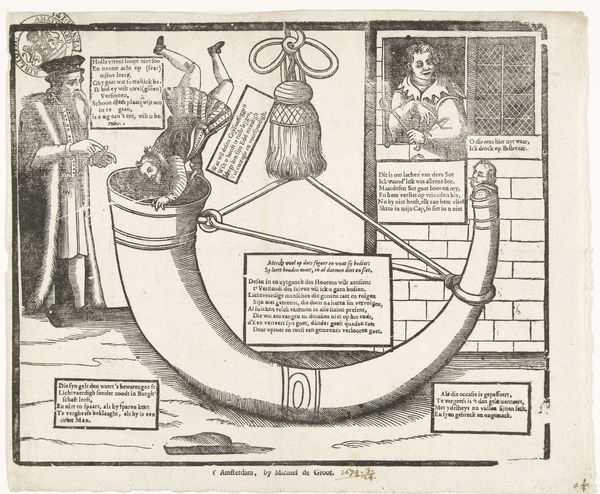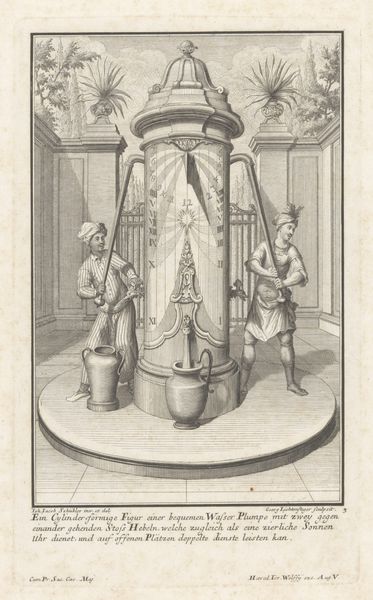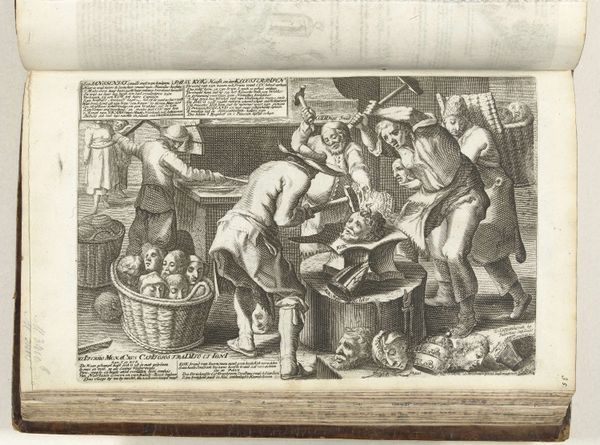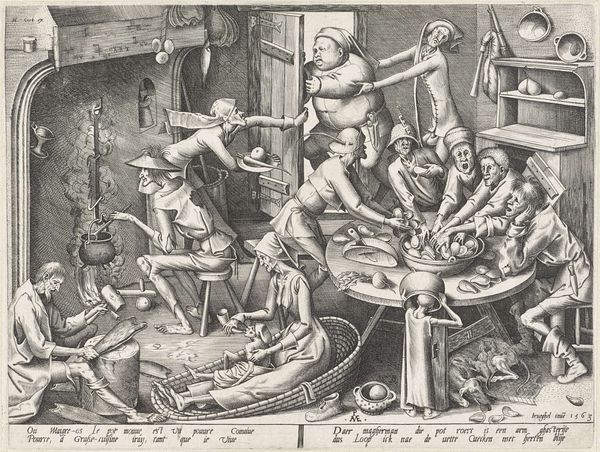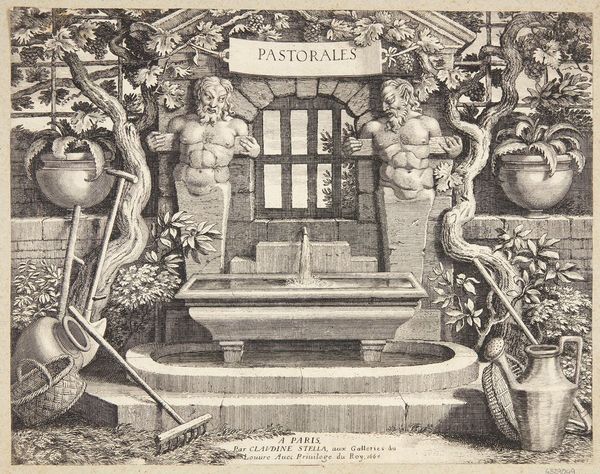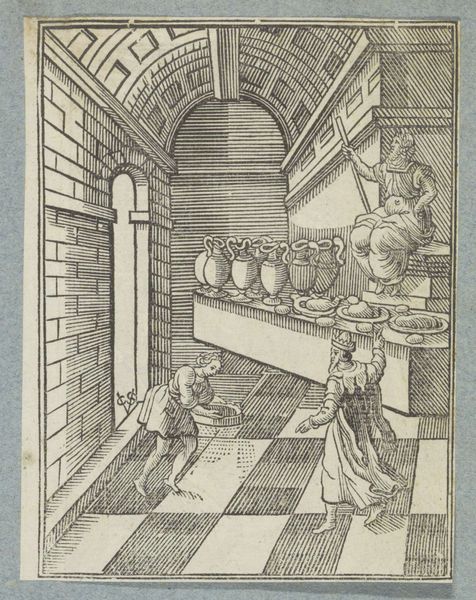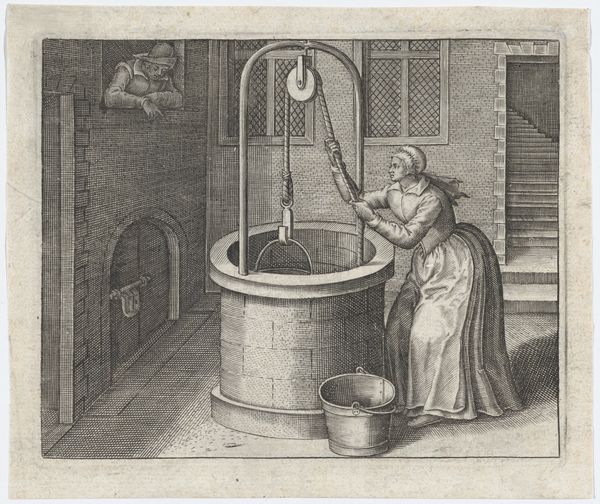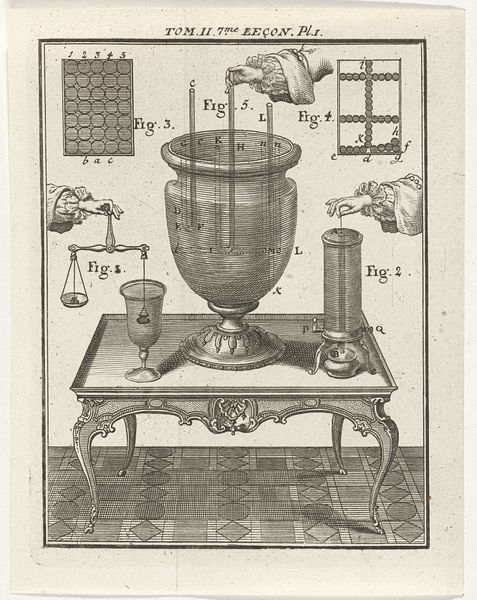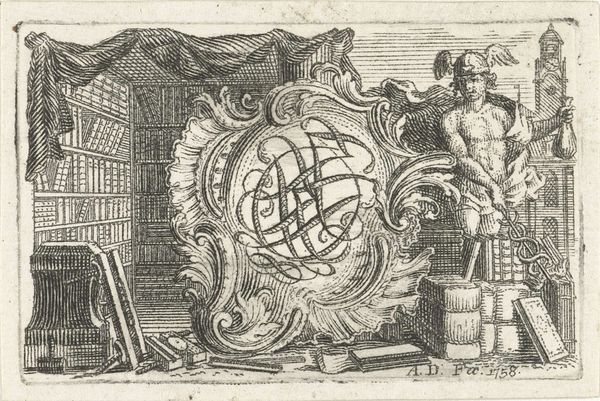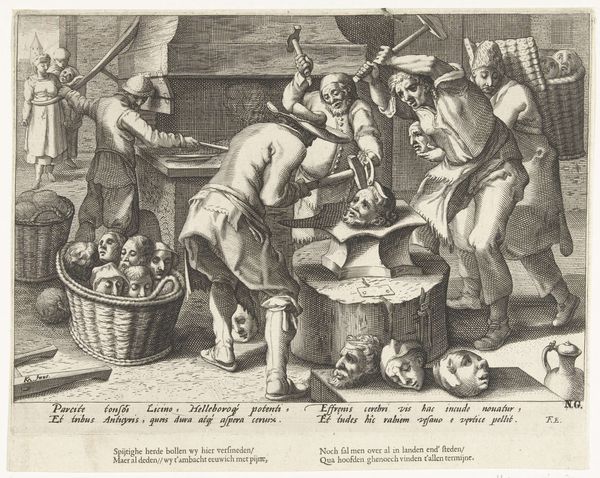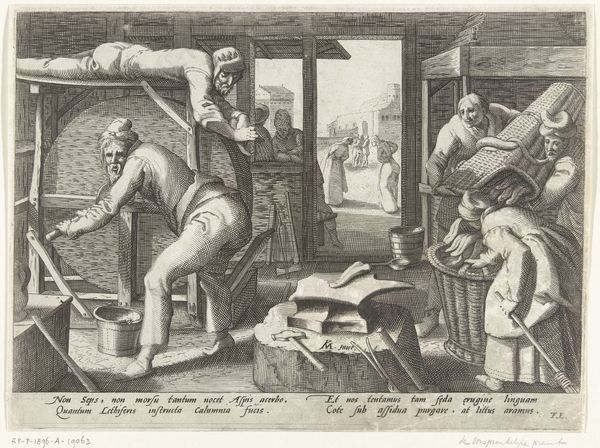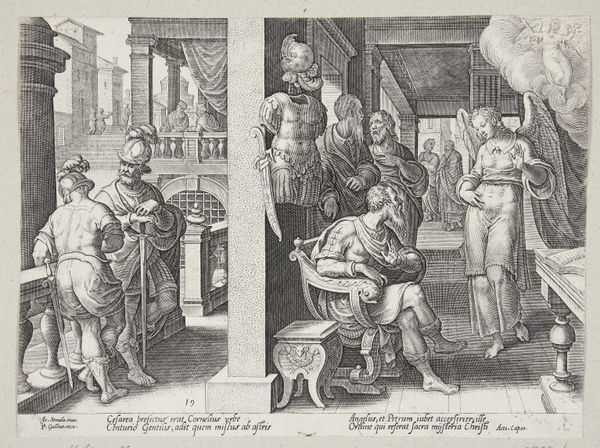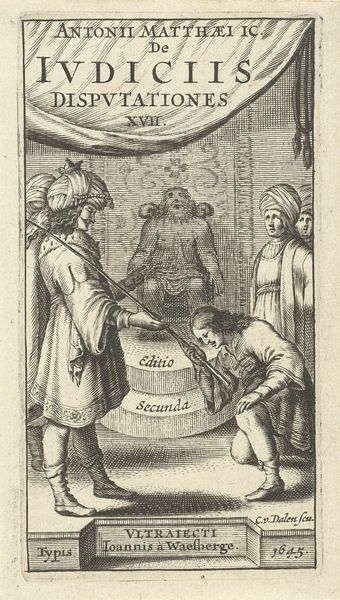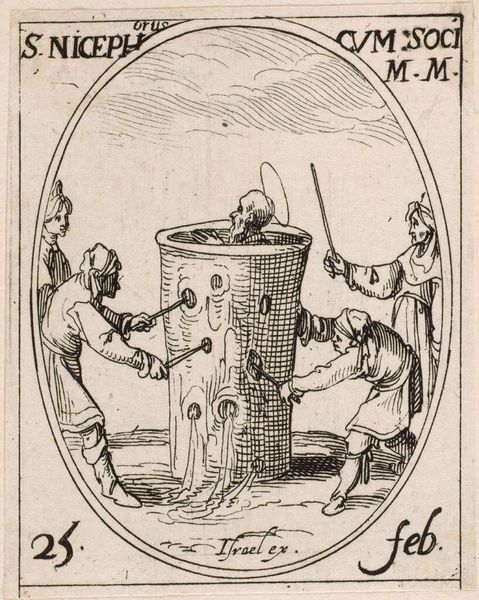
print, engraving
#
narrative-art
#
dutch-golden-age
# print
#
caricature
#
old engraving style
#
caricature
#
figuration
#
history-painting
#
engraving
Dimensions: height 288 mm, width 328 mm
Copyright: Rijks Museum: Open Domain
Curator: We are looking at "Verbeelding van het spreekwoord 'Bezint eer ge begint'", or "Image of the Proverb 'Look before you leap'" made in 1618. It is currently housed in the Rijksmuseum. Editor: It's striking how this print uses such detailed engraving to depict folly and recklessness. There's an almost grotesque humor to the scene, especially with the precarious figure diving headfirst into that enormous horn. What was the dominant method used for production? Curator: As an engraving, it's fundamentally about the precise control of the burin on the metal plate. Each line is a result of direct physical pressure and skill. The production method here speaks directly to the social and economic realities of printmaking during the Dutch Golden Age. Prints were commodities made to be circulated widely; so accessible imagery played a large role in daily life at this time. Editor: Right, so you're situating this image within a larger context of accessible and didactic art? It makes sense given the explicit proverb it illustrates. Look at the fashion here, what details could this image offer to socio-economic historians and anthropologists studying clothing and adornment during this era? How did style help visualize status? Curator: Absolutely. Clothing such as this print helps us think critically about identity during this time. The clothing on the characters indicate specific social roles or perhaps class aspirations. Each component and accessory suggests a specific role and associated economic conditions. Also note the print medium here; paper wasn't necessarily available to all levels of society. The relationship between producers, consumers, and even waste streams in artistic economies reveals the nature of 17th-century society, don’t you agree? Editor: Agreed, it is hard to forget that even though we're looking at a supposedly humorous scene, the figures and their choices are tethered to social power dynamics. This reinforces how deeply ingrained social and moral lessons were—not merely individual choices, but embedded in class-based dynamics, the fashion, the paper and labor, as you've put it. I think looking at this helps us explore ideas about human fallibility, recklessness, and the socio-economic layers present within the artistic sphere of that time.
Comments
No comments
Be the first to comment and join the conversation on the ultimate creative platform.
